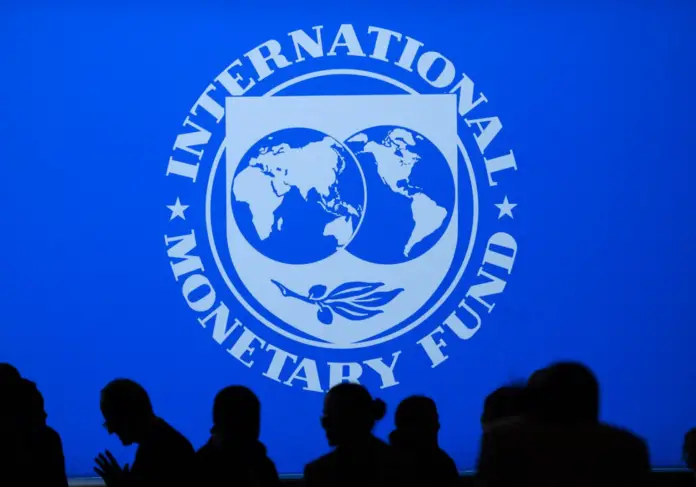Karl Marx described debt as the “most powerful levers of primitive accumulation” in early-modern Europe. The globalization of the debt-driven process of dispossession extended to newly independent nations during the 19th and early 20th centuries. In the present day, the remarkable levels of debt maintain enduring imbalances of power within the global economy through The International Monetary Fund (IMF) and World Bank.
IMF was established in 1944 during Bretton Woods Conference in the aftermath of the Great Depression of the 1930s with the intention of providing financial assistance to struggling nations. While the IMF’s efforts to promote global stability have garnered significant attention over time, the organization’s shortcomings resulting from negligence and flawed policy implementation have largely gone unnoticed. Despite its seemingly noble mission, the IMF’s methods have often left numerous countries trapped in dire circumstances.
A crucial factor contributing to the failure of the IMF’s noble mission lies in the disproportionate influence wielded by its wealthier member nations like Germany, Japan, France, Great Britain, and the United States control approximately 38% of the IMF’s decision-making power. This imbalance of power favors the interests of bankers, investors, and corporations hailing from these industrialized nations, often prioritizing their needs over those of the world’s impoverished populations. Consequently, the real motives of the IMF become evident through the lens of countries that have sought financial assistance, revealing significant impacts that solidify the organization’s true interests.
The IMF’s provision of affordable loans and continual bailouts is intertwined with a long-term entanglement for numerous nations. The approach employed by the IMF can be characterized as one that entails moral hazard. The concept of moral hazard theory suggests that when the probability of facing negative consequences is significantly diminished, individuals or entities tend to be more willing to take risks or engage in actions that may carry hazards. When it comes to the IMF, governments that borrow funds from the organization embark on a spending spree, acquiring costly loans for expensive ventures, thereby accumulating even greater debt. This behavior persists due to the belief that the IMF will consistently come to their aid, resulting in an ongoing cycle where countries consistently accumulate debt and experience numerous financial collapses.
Unfortunately, history has consistently authenticated the validity of this theory, as the IMF has played a significant role in nearly a hundred banking crises that have occurred in the developing world over the past 15 years. One striking example is the case of Indonesia, where an IMF-led banking crisis resulted in a staggering 14% decline in GDP and a distressing 40% increase in poverty rates. Likewise, when we analyze the economic reliance of Sierra Leone on its well-to-do supporters from the IMF, we observe a type of entanglement that resembles the dependence of a colonized nation on its ruling metropolis. This relationship reached its peak during the domestic crisis triggered by the 2008 recession.
The IMF’s influence extends further when we consider the countries that have been subjected to IMF bailouts. Astonishingly, 11 nations across the globe have become reliant on IMF aid for a period spanning over 30 years. Another 32 countries have been borrowers for a duration of 20 to 29 years, while 41 countries have been utilizing IMF credit for a span of 10 to 19 years. By perpetually offering assistance under the guise of aiding nations in their times of crisis, the IMF effectively manipulates and strings along these countries, concealing their true motive of exerting foreign control.
The IMF employs currency devaluation as a final measure. Often, countries experiencing negative net exports or extreme debt situations find themselves in this position. Consequently, the IMF compels these countries to artificially reduce the value of their currencies. This strategy aims to diminish the impact of their debt and encourage other countries to purchase their goods. By devaluing their currency, these countries make their goods more affordable for foreign buyers, thus stimulating demand. On average, a 10% decline in a nation’s currency value can lead to a 1.5% boost in exports as a percentage of GDP. However, it is unfortunate that the IMF often benefits from this approach. Specifically, in developing countries, lower prices create greater demand for their raw materials.
The IMF has influenced nations into relinquishing their resources and authority to the organization. Established in the aftermath of the Second World War, numerous academics contend that the IMF serves as the chief instrument employed by Western powers to perpetuate poverty in developing countries. Regrettably, a comprehensive study conducted by Harvard University revealed that the majority of nations would have enjoyed superior long-term economic outcomes had they refrained from seeking assistance from the IMF.
The current scenario of Pakistan’s economy is worse. The statistics provided by the IMF are as the Real GDP growth rate is 0.5 %, GDP current prices $376.49 billion, GDP per capita $1.66 thousand, GDP Purchasing Power Parity $1.58 thousand, Inflation rate on annual percentage is 27.1%, population 231.55 million, unemployment rate 7%, Current account balance $-17.405, and general government gross debt 73.6% of the GDP. This data shows the shoddier condition of the economy. No doubt, in such scenario government of Pakistan will have to go for the bailout package from the IMF with very strict conditions.
The staff of the International Monetary Fund (IMF) and Pakistani authorities have reached an agreement at the staff level regarding the policies that will receive support through a Stand-By Arrangement (SBA). However, this agreement is still awaiting approval from the IMF Executive Board, which is expected to review it by mid-July. Under this agreement, Pakistan is set to receive $3 billion, which corresponds to 111 percent of Pakistan’s IMF quota.
The forthcoming Stand-By Arrangement is designed to strengthen the government’s immediate efforts in stabilizing the economy, particularly in response to recent external shocks. Its main objectives are to maintain macroeconomic stability and establish a framework for financial assistance from both multilateral and bilateral partners. Moreover, the new SBA aims to facilitate social and developmental expenditures by improving domestic revenue generation and implementing responsible spending practices, thereby addressing the needs of the Pakistani population.
In order to overcome the current challenges, it is imperative for Pakistan to demonstrate unwavering commitment to policy implementation. This entails promoting greater fiscal discipline, adopting a market-driven exchange rate to absorb external pressures, and making further progress in reforms, particularly within the energy sector. These reforms seek to promote climate resilience and create a more favorable business environment.
Several countries, such as Poland, South Korea, Indonesia, Portugal, and Ireland, have successfully developed their economies with support from the IMF. However, it is important to note that these countries have formulated policies that prioritize their own national interests. By leveraging bailout packages, they were able to alleviate the challenging conditions of their economies. The government of Pakistan should consider adopting a similar approach in order to attain economic self-sufficiency. Failing to do so may result in a continued state of dependence on foreign debt or aid, which could impede progress and hinder national sovereignty.







